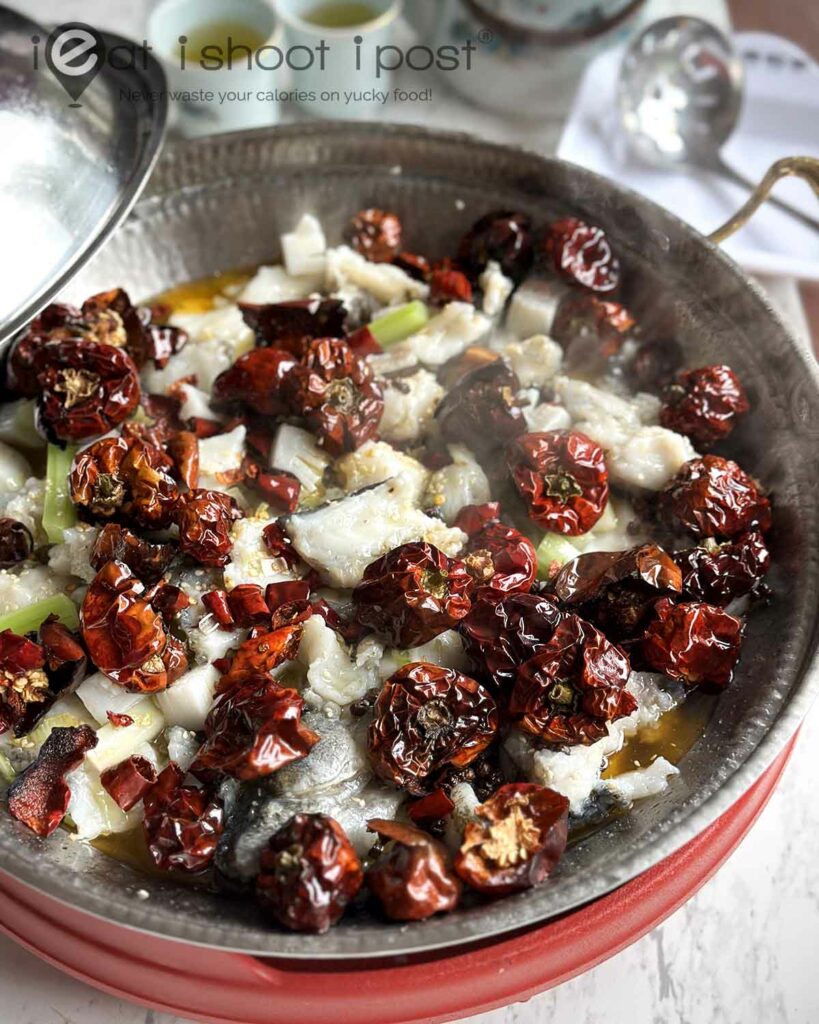
“China” Chinatown
Have you ever wondered why Singapore has a Chinatown, even though the majority of its population is Chinese? It makes sense in cities like San Francisco or Sydney, where the Chinese community is a minority, but why here?
Chinatown’s origins trace back to 1822 when Sir Stamford Raffles implemented the Raffles Town Plan,. That’s when they designated different areas for different ethnic groups. The area that became Chinatown was primarily allocated to Chinese immigrants, particularly those from southern China. While Chinese settlers eventually spread throughout Singapore, Chinatown remained a cultural and commercial hub. It is home to clan associations, businesses, and temples that reinforced its identity.
In the past, Chinatown reflected the heritage of early immigrants from Fujian, Guangdong, and Hainan. These have shaped our food and culture. But in recent years, it has transformed into a more “China” Chinatown. Eateries representing a wider range of regional Chinese cuisines have emerged.
The sheer variety of food options today is overwhelming. I must admit that I hadn’t even started exploring them until we received an invitation from Gong Jing Li to try their dishes. With a stellar 4.9-star rating on Google Maps, it was an easy invitation to accept!
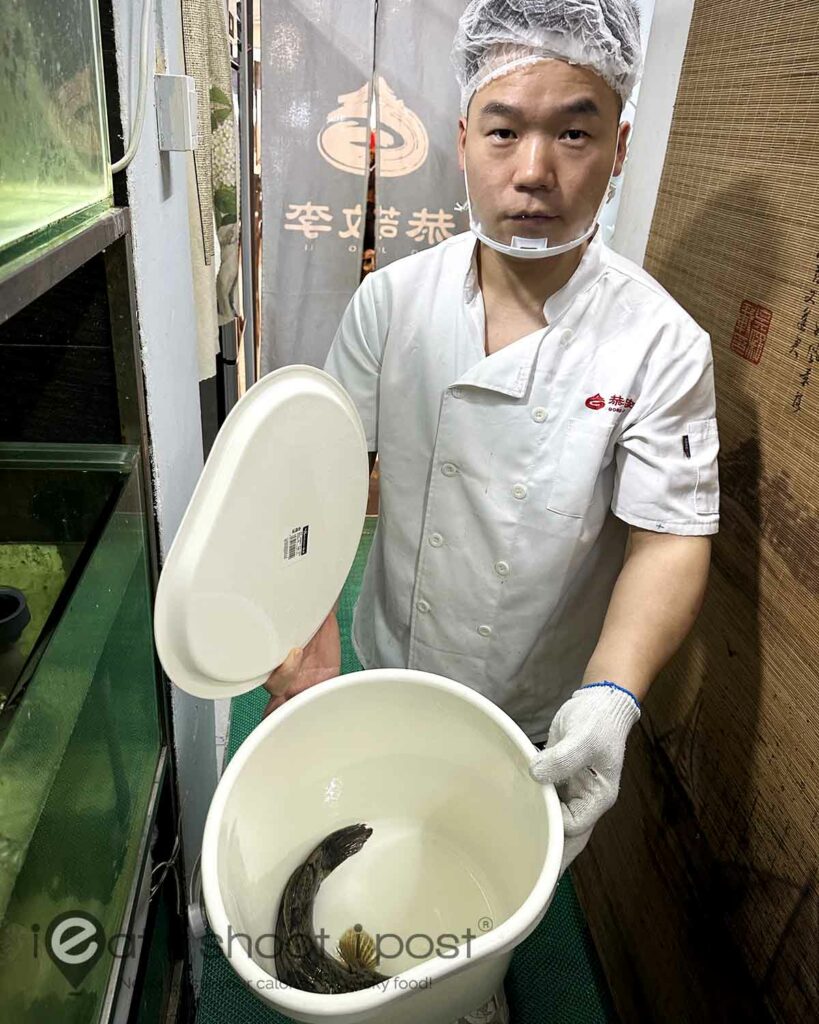
Fresh Meats and Live Fish
One reason why we took so long to explore the new Chinese eateries in Chinatown was the concern sparked by the Chinese saying “挂羊头卖狗肉” (guà yáng tóu mài gǒu ròu). It means to display a sheep’s head while serving dog meat. We’ve heard too many rumors about questionable kitchen practices at some of these places. Quite frankly, a few of the China-based restaurants we’ve tried just didn’t quite suit our taste buds.
Thankfully, Gong Jing Li proved to be a pleasant surprise. The restaurant takes pride in using only fresh, high-quality meats and live fish. The lady boss, having lived in Singapore for several years with her children, understands local palates. She has subtly adjusted the flavours to cater to them.
Gong Jing Li’s Singapore outlet is its first overseas venture. The brand was founded in 2001 by her husband and has since grown to 20 outlets in Beijing. They started as a bao bun specialty eatery before expanding into restaurants specializing in Qiang Guo Yu (Hot Oil Pot Fish) and Mala Fragrant Pots.
For their Singapore location, they’ve curated signature dishes from their various restaurants, bringing the best of Gong Jing Li to one spot!
Signature Dishes
Qiang Guo Yu (抢锅鱼)
Their standout dish is Qiang Guo Yu (抢锅鱼). It is a fragrant Sichuan-style poached fish where the fish is gently simmered in a rich, umami-laden broth before being dramatically finished with a sizzling pour of hot oil infused with the deep, smoky aroma of Deng Long Jiao (灯笼椒)
These vibrant lantern red chillies are specially imported from China and they impart a smokey fragrance to the dish without the heat.
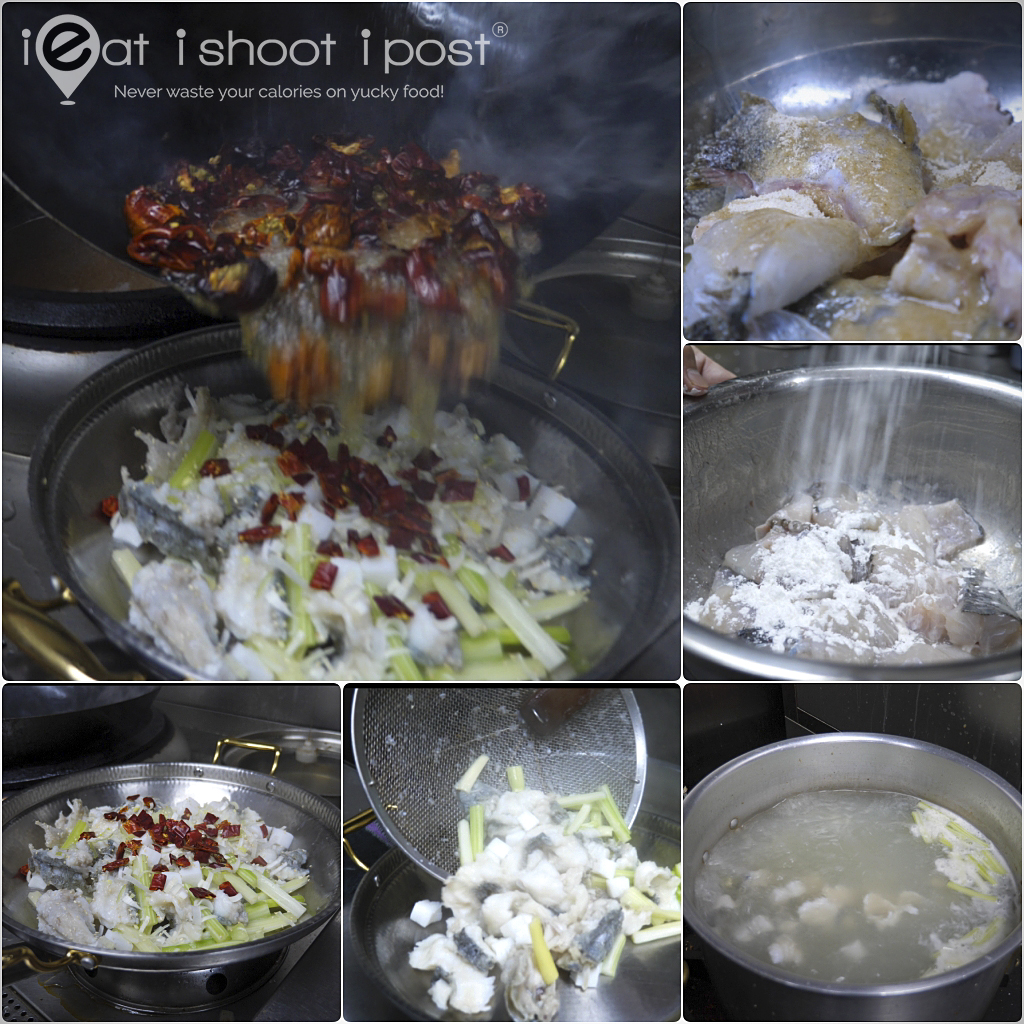
Unlike Shui Zhu Yu (水煮鱼), which is submerged in a fiery, oil-laden broth, Qiang Guo Yu is first poached in a deeply flavourful yet lighter stock. The finishing touch – a ladle of smoking hot oil poured over the dish, instantly releases intoxicating aromas of garlic, scallions, and chilies.
This technique not only enhances the fragrance but also gives the dish its signature glossy sheen and lightly crisped toppings. The result is a beautifully balanced dish with layers of numbing spice, umami depth, and succulent fish. It is perfect for those who enjoy bold Sichuan flavors without excessive oiliness. 4.25/5
Prawn and Chicken Wing Mala Fragrant Pot (鸡翅虾香锅)
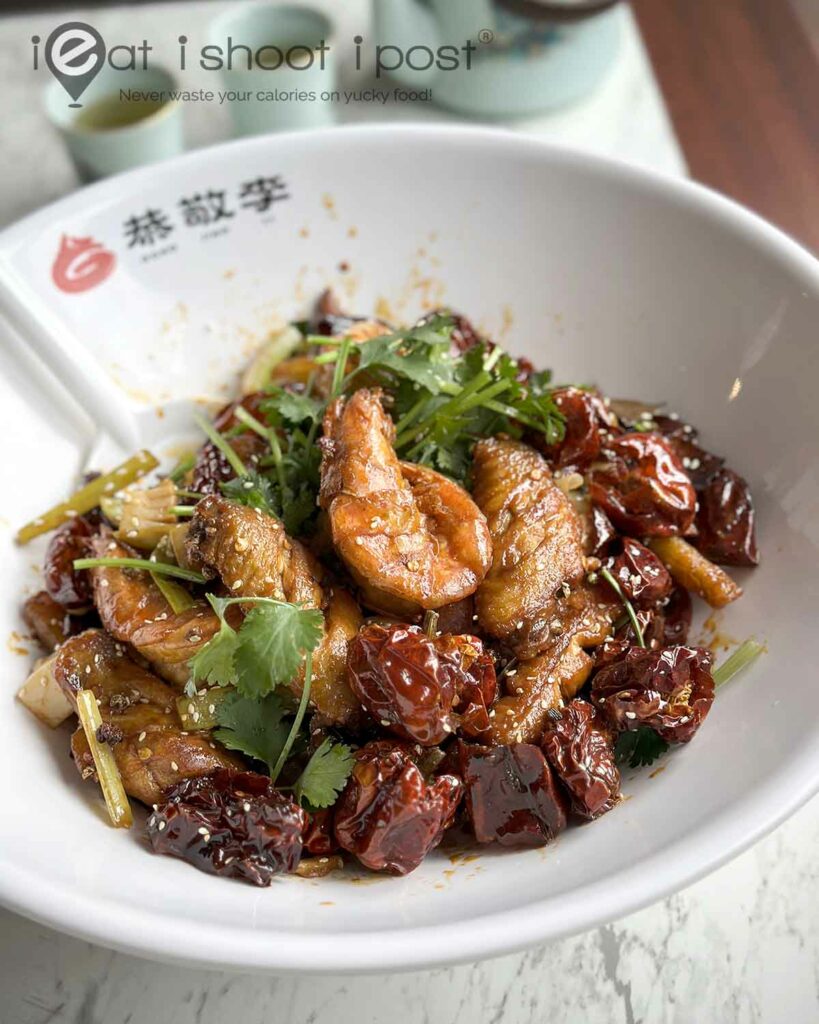
Mala fragrant hotpot is very popular in Singapore. There are even stalls at coffeeshops and hawker centres that allow you to choose your own ingredients that can be tossed together in the hot numbing sauce.
What makes the one at Gong Jing Li different is the sauce. They have their own unique blend of Chinese herbs and spices, giving it a distinctive and complex flavour.
This proprietary mala sauce is crafted in their central kitchen in China before being sent to Singapore. They take such pride in their signature sauce that they even showcase a display listing the various spices used in its creation.

Beyond the sauce, the rich flavours of their Mala Xiang Guo (Fragrant Pot) also come from their commitment to using fresh chicken wings and prawns.
Their philosophy is to prioritize fresh ingredients whenever possible, only opting for alternatives when absolutely necessary. This dedication to quality and authenticity ensures a dish that is rich, aromatic, and deeply flavourful. Like many other restaurants, diners can adjust the spice level to their preference. Since we don’t have a high tolerance for spice, we chose the mild level, which turned out to be just right for us. 4.25/5
Empress Dowager Nourishing Tofu (老佛爷养生豆腐)
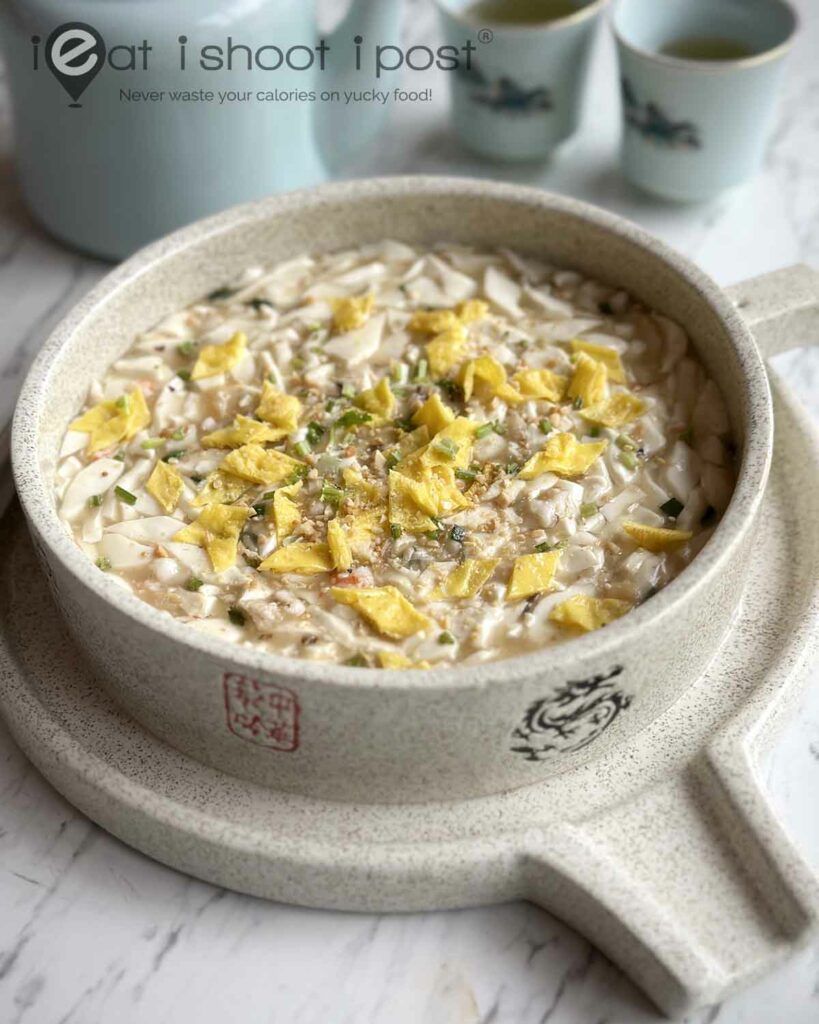
The Empress Dowager Nourishing Tofu was an unexpected delight! Served in a plate resembling a traditional stone mortar, the dish immediately stood out with its slivers of diamond-shaped tofu and egg.
After clarifying with the lady boss, we realised that the dish name in the menu should have been “The Empress Dowager Nourishing Tofu”. True to its name, the flavors and texture were incredibly comforting and nourishing. While there were no particularly bold or unusual flavors, the rich, flavourful chicken stock paired with the silky smooth braised tofu created a deeply satisfying dish. It’s definitely one of those dishes that would bring me back for another visit! 4.5/5
Seafood Porridge (海鲜粥)
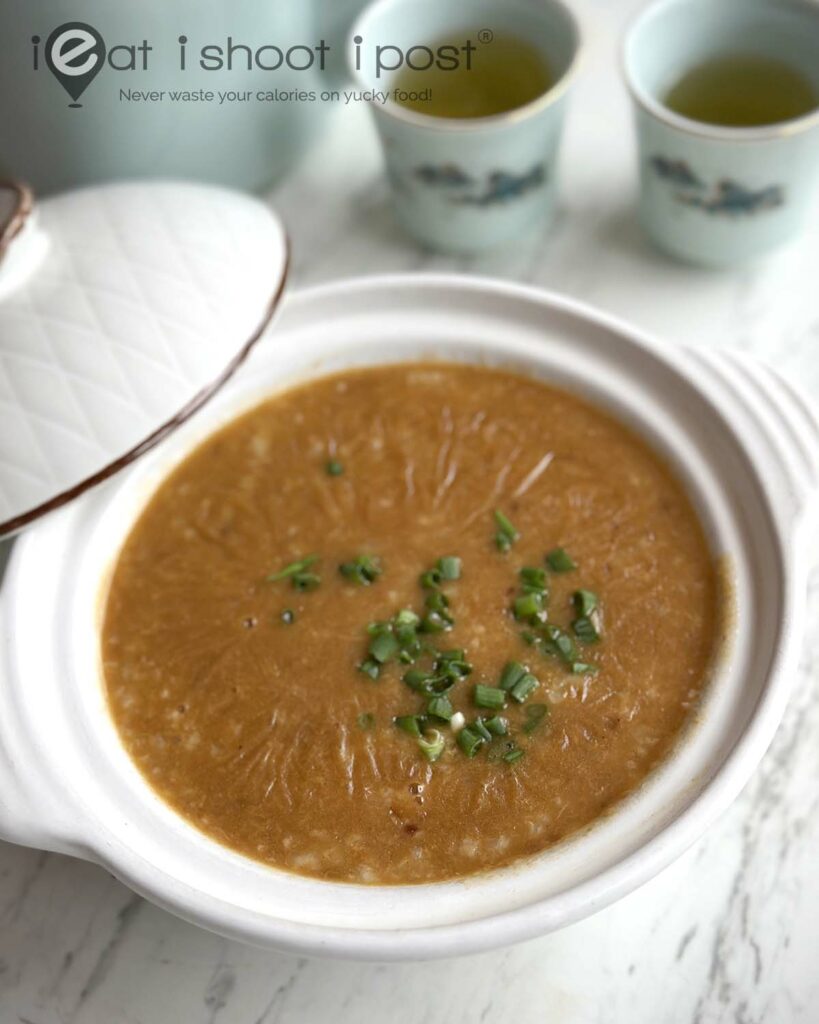
If there’s one dish that qualifies as a sleeper hit, it has to be their Special Seafood Porridge.
At first glance, it may look like a simple brown gruel. But its unassuming appearance hides the depth of flavour within. Packed with an abundance of dried seafood that has been finely ground into a powder, the porridge is liquid umami.
It’s essentially the Chinese version of a lobster bisque—comforting, brimming with seafood essence, and sublimely delicious in every spoonful! 4.5/5
Hutong Style Sweet and Sour Pork
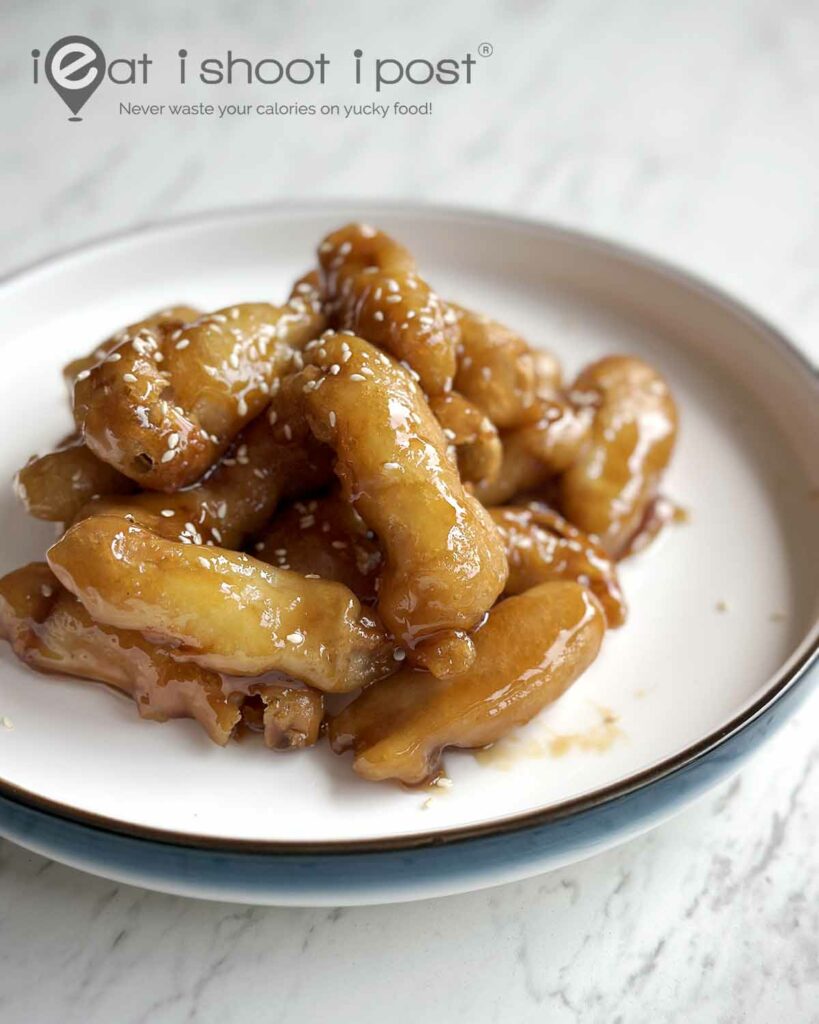
Another unexpected hit was the Hutong-style sweet and sour pork. Unlike the version we’re familiar with, these golden nuggets feature tender pork loin (instead of fattier pork collar) encased in a light, crispy, and airy batter.
Instead of the usual tomato-based sauce, they are coated in a simple yet well-balanced blend of grain vinegar and sugar. It didn’t immediately wow me on the first bite, but before I knew it, I was reaching for another piece – and another until the whole plate was empty! 4.5/5
Hotplate Grilled Lamb (贝勒爷烤羊肉)
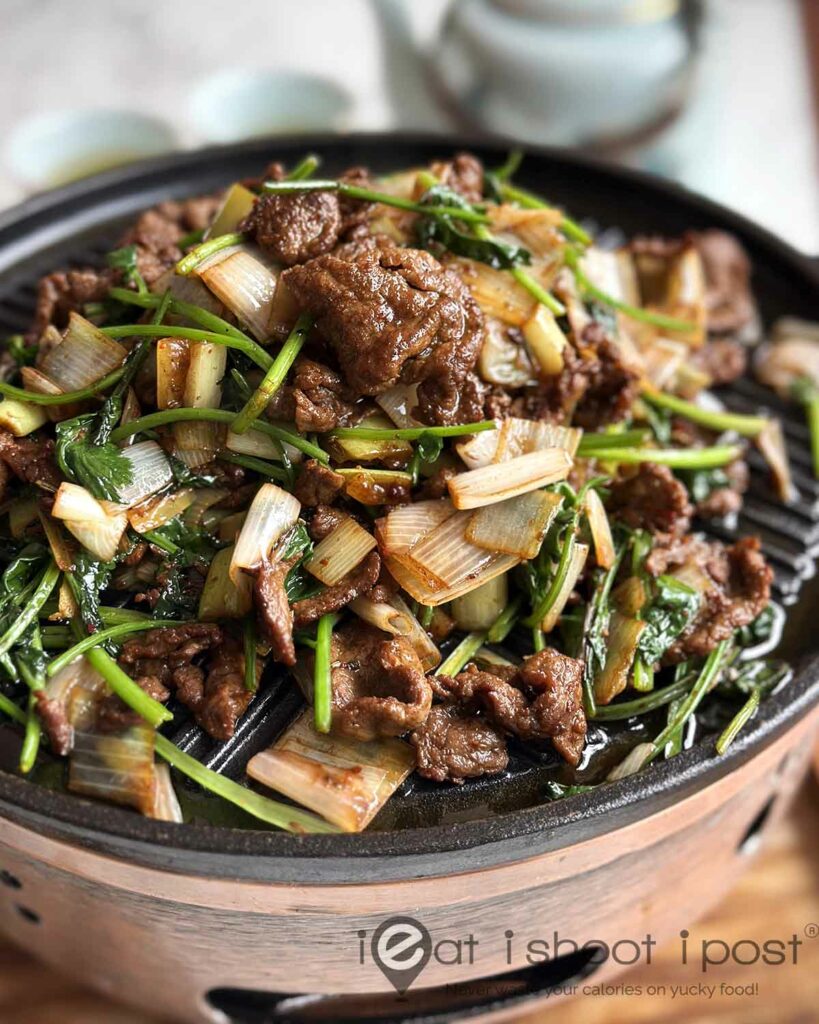
The hotplate lamb is a classic Beijing dish with origins dating back to the Mongol rule. Here, they use fresh lamb leg which ensures a tender and succulent bite. The bold flavours come from a fragrant mix of dried chili and cumin, reminiscent of Chinese BBQ skewers. It’s a great choice if you’re craving something hearty, robust, and packed with Middle Eastern spice! 4.25/5
Handmade meat and vegetable pau (手切酱肉包, 素三鲜包)

Bottom: Steamed Stuffed Bun with Three ingredients (vegetarian) $5.50++
The Gong Jing Li brand began with its first eatery specializing in handmade bao zi. It is called Xiao Pang Bao Zi. And that is why you find them on the menu.
The buns are made using a natural starter brought over from China, giving the skin a chewy, rustic texture similar to the bao at Din Tai Fung. The filling is made from fresh, lean pork, resulting in a juicy bite without excessive fat.
While they are enjoyable, they aren’t something I’d make a special trip for. At times, the meat juices soak into the bun, giving them a more homemade feel rather than a polished, restaurant-quality finish. Still, I’ll probably order them when I visit the restaurant because they are very comforting and reminds me of homemade buns. 4/5
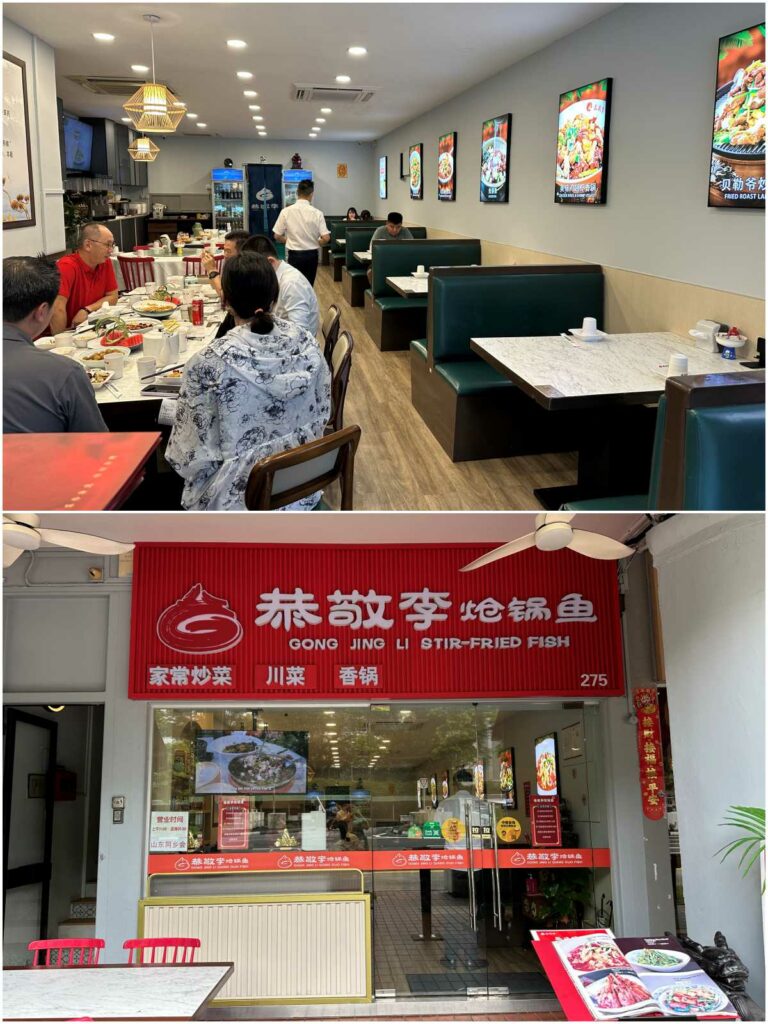
Conclusion
I was pleasantly surprised to find such a high-quality Chinese restaurant in Chinatown! Every dish was delicious, and their commitment to using fresh ingredients is truly reassuring. The menu offers a delightful mix of Sichuan and Beijing specialties, all expertly prepared. Definitely worth a trip to Chinatown!
Disclosure: The video is produced in collaboration with Gong Jing Li. Opinions expressed in this article and the video are those of our own.

